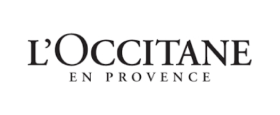It may seem like an insurmountable challenge to go from having an idea to opening your first shop. If you are in that position, we have some great advice from one of the greatest entrepreneurs in recent times...
Read MoreSpaces in Gauteng
Malanshof Centre - Versatile Ground Floor Space
Malanshof Centre, Hans Schoeman Street, Malanshof, Randburg, South Africa
750 m²
R 75,000.00 per month
Atterbury Boulevard - Magnificent 1st Floor Space
Atterbury Boulevard, Faerie Glen, Pretoria, South Africa
64 m²
R 10,240.00 per month
Genesis on Fairmount - Prime Retail Space
Genesis on Fairmount Shopping Centre, Sandler Road, Fairmount, Johannesburg, South Africa
47 m²
R 16,450.00 per month
The Style Loft - Compact Vendor Space
The Style Loft Sandton, Sandton, Sandown, Sandton, South Africa
14.6 m²
R 28,000.00 per month
Cnr Sim - Compact Retail Space
Cnr Sim, Simmonds Street, Marshalltown, Johannesburg, South Africa
45 m²
R 9,000.00 per month
Bedford Centre - White Box Corner Space
Bedford Centre, Van Der Linde Road, Bedfordview, Johannesburg, South Africa
69 m²
R 17,250.00 per month
Co.Space Entrepreneur Village - Kitchen Space
11 Havelock Road, Willow Park Manor, Pretoria, 0184, South Africa
30 m²
R 10,325.00 per month
The MARC Medical Suites - Room 02
The MARC, Rivonia Road, Sandown, Sandton, South Africa
15 m²
R 16,800.00 per month
Menlyn Park - Footwear or Fashion Space
Menlyn Park Shopping Centre, Lois Avenue, Menlyn, Pretoria, South Africa
81 m²
R 25,000.00 per month
Menlyn Park - White Box Fashion Space
Menlyn Park Shopping Centre, Lois Avenue, Menlyn, Pretoria, South Africa
411 m²
R 108,657.00 per month
Moreleta Plaza - Accessible White Box Space
Moreleta Plaza, Rubenstein Drive, Moreleta Park, Pretoria, South Africa
79 m²
R 20,145.00 per month
14 Long St - Prime Retail Space
14 Long Street, Cape Town City Centre, Cape Town, South Africa
260.49 m²
R 74,250.00 per month
The Felix - Retail Space
58 Strand Street, Cape Town City Centre, Cape Town, South Africa
83 m²
R 20,750.00 per month
The Felix - High Traffic Fashion Space
58 Strand Street, Cape Town City Centre, Cape Town, South Africa
277 m²
R 69,250.00 per month
Tyger Valley Shopping Centre- White Box Space
Tyger Valley Shopping Centre, Willie Van Schoor Drive, Bellville Park, Cape Town, South Africa
70 m²
R 25,000.00 per month
Shop in Shop Concept
267 Main Road, Three Anchor Bay, Cape Town, South Africa
185 m²
R 3,000.00 per month
Paarl Mall - Prime Corner Space
Paarl Mall, Paarl Mall, Jones, Southern Paarl, Paarl, South Africa
60.26 m²
R 34,159.00 per month
Brickworks, Salt River - Trendy Retail Space
The Brickworks, Brickfield Road, Salt River, Cape Town, South Africa
35 m²
R 7,000.00 per month
Salt River - Prime Restaurant or Retail Space
97 Durham Avenue, Salt River, Cape Town, South Africa
215 m²
R 27,950.00 per month
Long Street - Large Ground Floor Space
209 Long Street, Cape Town City Centre, Cape Town, South Africa
500 m²
R 50,000.00 per month
Long Street - Prime Space Below Beerhouse
BEERHOUSE on Long, Long Street, Cape Town City Centre, Cape Town, South Africa
114 m²
R 29,000.00 per month
Longbeach Mall - Restaurant for rent
Longbeach Mall, Buller Louw Boulevard, Noordhoek, Cape Town, South Africa
244 m²
R 48,800.00 per month
Table Bay Mall Exhibition space l Anchor Court
Table Bay Mall, Sunningdale, Cape Town, South Africa
9 m²
R 2,200.00 per day





























